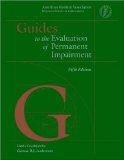New Ogilvie DFEC Rebuttal Calculator feature!

Late last week a user asked for a new feature. ((Thanks Dennis!)) He wanted to be able to perform the Ogilvie DFEC rebuttal calculation and have the results e-mailed to him. ((Photo courtesy of Vernhart)) Well, I built it! ((Why, what did you do with your Saturday morning?))
To e-mail yourself a calculation, perform the calculation as normal. When the website returns your calculation, it will say “E-mail Me!” Just click that button and it will send an e-mail to the address you used to register for this website.
However, here’s the cool part: I’ve installed this new e-mail system into every calculator! ((I haven’t installed it in some of the EAMS lookup functions)) No more having to copy and paste! Just click one button and your calculation will show up in your inbox! ((If you filled in the boxes for Applicant, WCAB #, and File #, it will include this information in your e-mail as well. This is only for your convenience and not a requirement.))
Although I intend this to be a paid-subscription-only feature, I am going to leave it open for all users while I get some feedback. So, what do you think? Please leave a comment or shoot me an e-mail!



